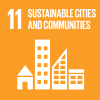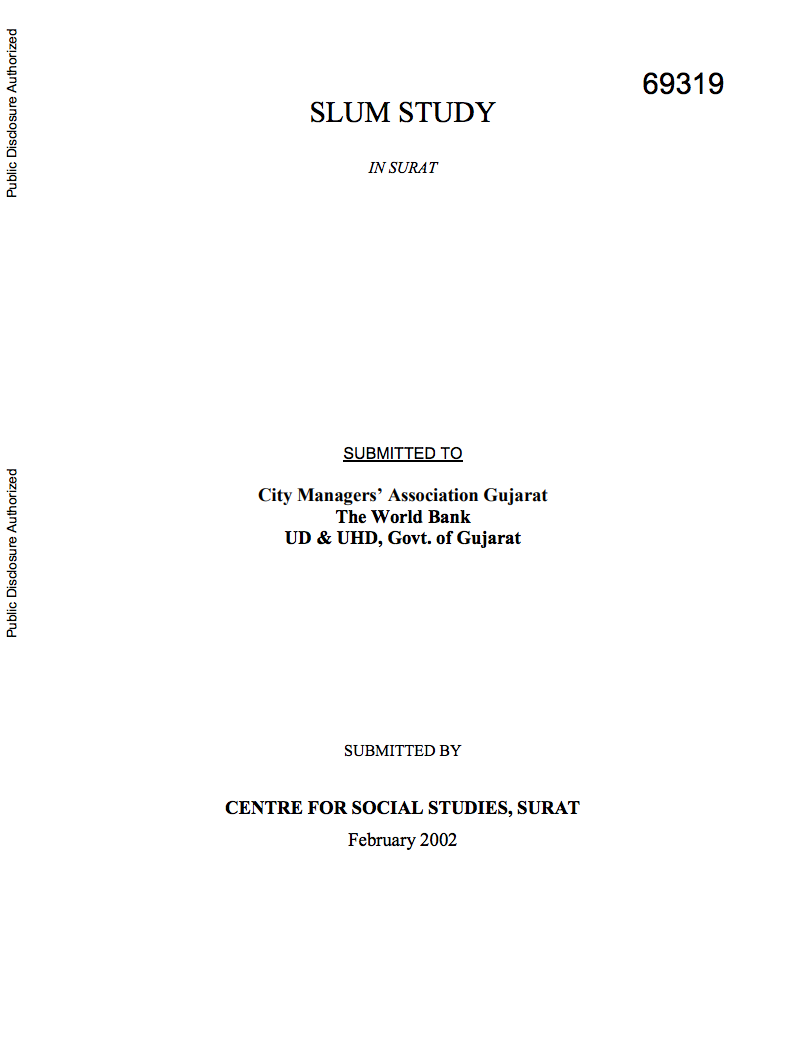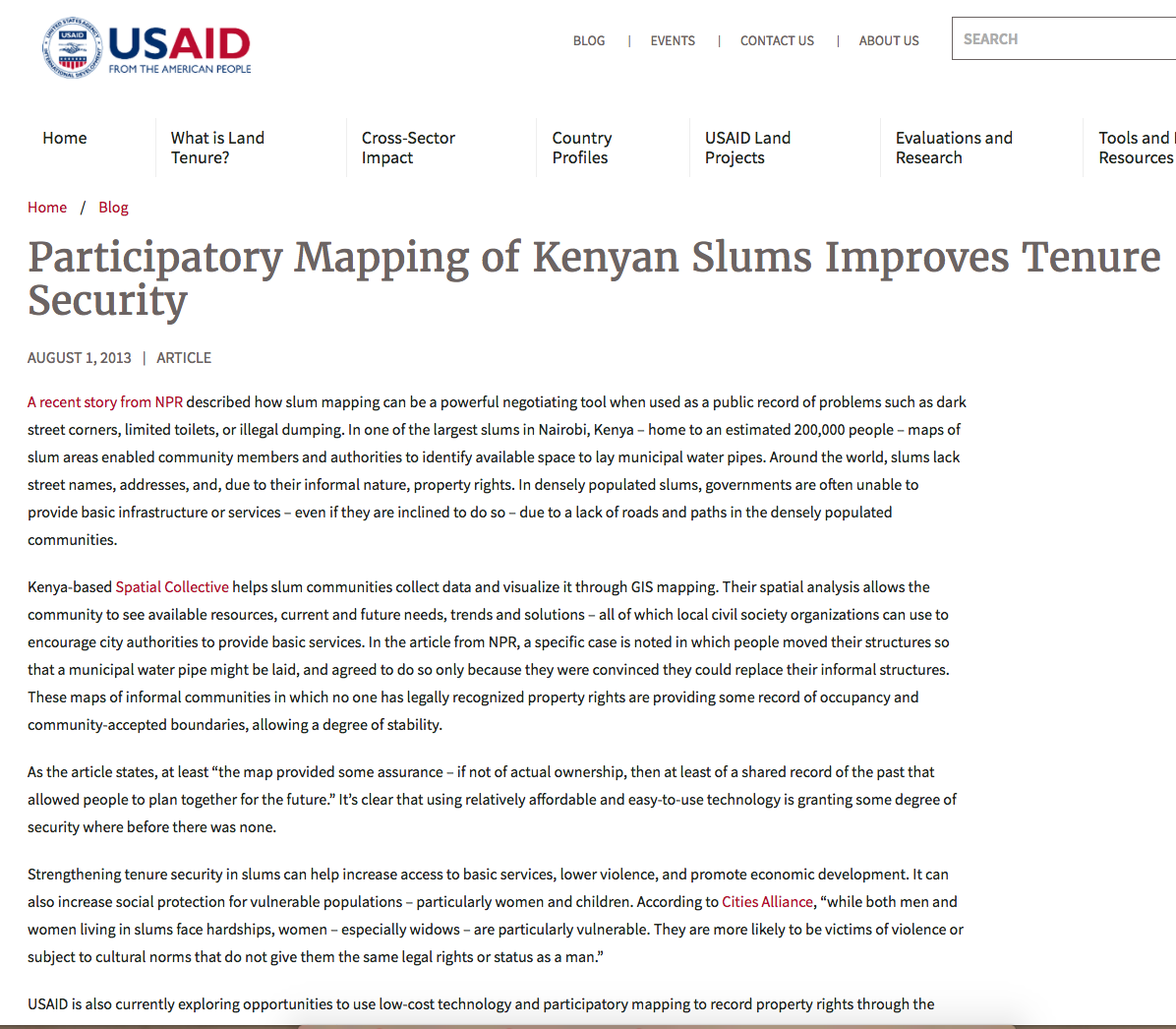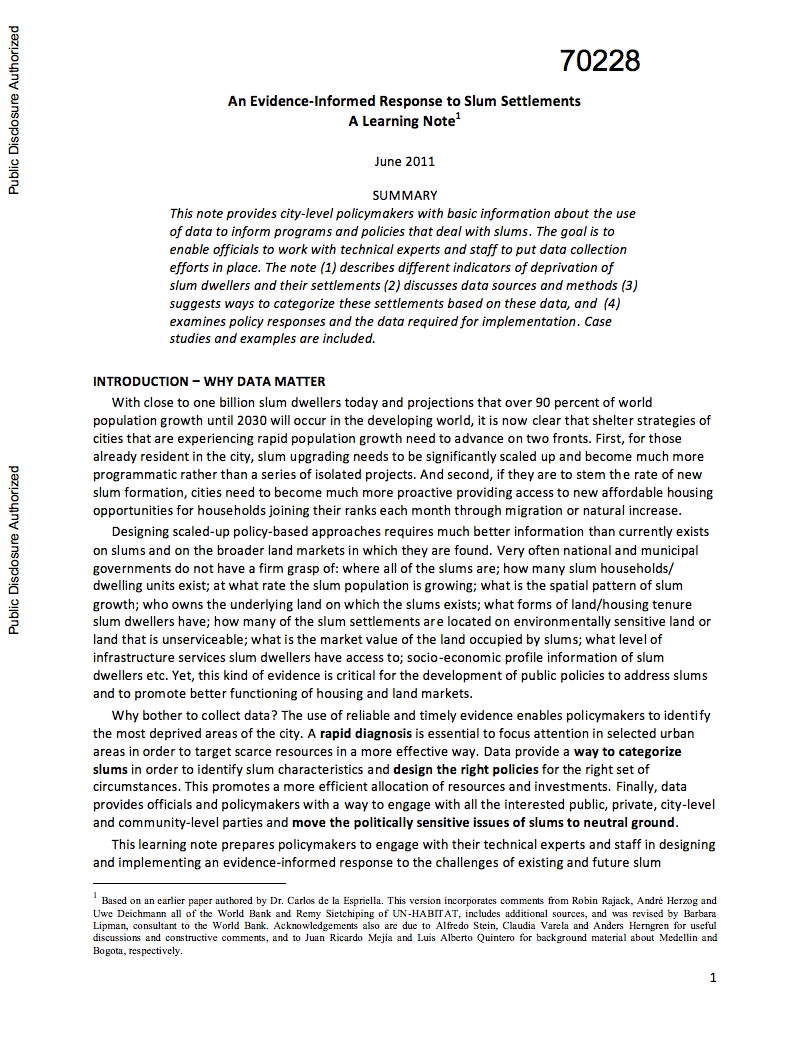
Proportion of urban population living in slums, informal settlements or inadequate housing
Last updated on 1 February 2022
This indicator is currently classified as Tier I. The United Nations Human Settlements Programme (UN-Habitat) is the Custodian agency for this indicator.
Unit of measure: The indicator is unitless, expressing a ratio between the number of people living in households who do not meet one or more of the basic housing conditions and the total population (%), Ratio between the number of households with net monthly expenditure on housing exceeding 30% of the total monthly income and the total population (%), Ratio between the number of households with approved municipal permits and the total population (%)
Why is this indicator important?
Urbanization is one of the most significant global trends of the 21st century. Rapid urbanization without proper planning and governance mechanisms, can lead to tenure insecurity, spatial inequalities and a lack of basic service provision. Expanding slums and precarious informal settlements may increase poverty, pollution, health, and environmental risks. At the same time, displacement for urban development can lead to food insecurity, loss of community structures, and the marginalization of certain segments of the population.
It is thus essential to collect data on the proportion of the population living in slums, informal settlements or those living in inadequate housing so that appropriate policies for addressing housing issues can be developed ensuring no one is left behind.
How is the indicator measured and monitored?
According to the metadata document, people living in informal settlements or slums, do not meet one or more of the five following housing conditions: (1) access to improved water; (2) access to improved sanitation facilities; (3) sufficient-living area (not overcrowded); (4) durable housing; (5) and security of tenure. In addition, the indicator considers whether households have an approved municipal permit as well as their affordability to measure inadequate housing. Most data is derived from censuses and household surveys. In addition, UN-Habitat reports annually on related data in the MDG’s reports. In 2021, the Global Housing Indicators Working Groups suggested to coordinate the worldwide data collection on this indicator.
As of now, indicator measurement covers 320 cities as part of the UN-Habitat City Prosperity Initiative. The data is disaggregated by location, income-group, sex/ethnicity/religion/migration status (head of household), age, and disability status. Planning has already begun for regional and global disaggregation. The major limitations lie with the lack of capacities at national and city levels to assess and monitor all indicator components. Moreover, the indicator does not consider homelessness.
By Anne Hennings, peer-reviewed by Dennis Mwaniki, Spatial Data Expert at UN-Habitat’s Data and Analytics Unit.
Official indicator data
The criteria defining slums, informal settlements and inadequate housing include access to water, access to sanitation, sufficient living area, overcrowding, structural quality, durability and location, security of tenure, affordability, accessibility, and cultural adequacy. * Select "year" below to see the most recent data for more countries.
Other related indicators on the Land Portal
In addition to the official indicator data, the following indicators provide information concerning urban land administration, access to feasible and affordable formalization, and efforts to improve informal settlements.
| Indicator | Min-Max Number of years |
Countries / Obs | Min / Max Value |
|---|---|---|---|
| Formalization of urban residential housing is feasible and affordable | |||
| Individual land in urban areas is (i) recorded and (ii) mapped | |||
| Process to improve informal settlements exists | |||
| Urban Population |
Slum Study in Surat
This report discusses the study of slums
in the city of Surat and it is divided into eight sections.
Section one introduces the study and discusses general
background, overall methodology, methods and techniques of
data collection, and methods of analysis; section two
Participatory Mapping of Kenyan Slums Improves Tenure Security
A recent story from NPR described how slum mapping can be a powerful negotiating tool when used as a public record of problems such as dark street corners, limited toilets, or illegal dumping.
An Evidence-Informed Response to Slum Settlements : A Learning Note
This learning note prepares policymakers
to engage with their technical experts and staff in
designing and implementing an evidence-informed response to
the challenges of existing and future slum settlements. To
that end, the note discusses a set of indicators and data
Empowering change: The effects of energy provision on individual aspirations in slum communities
This paper discusses the role of energy provision in influencing the social aspirations of people living in slums. We examine factors that influence the shift in aspirations in five slum settlements using data from 500 interviews conducted in serviced and non-serviced slums from the state of Gujarat in India.
Assessing the Utility of Satellite Imagery with Differing Spatial Resolutions for Deriving Proxy Measures of Slum Presence in Accra, Ghana
Little research has been conducted on how differing spatial resolutions or classification techniques affect image-driven identification and categorization of slum neighborhoods in developing nations.
Paginação
Can land-sharing dispel shadow of eviction for Uganda slum?
By: Yasin Kakande
Date: October 3rd 2016
Source: Thomson Reuters Foundation
KAMPALA (Thomson Reuters Foundation) - The bulldozers came after midnight, sirens wailing. Startled from their sleep, slum-dwellers on the outskirts of Uganda's capital Kampala dashed for safety as the diggers tore through wood, brick and corrugated iron.
Indonesian slum dwellers challenge eviction law in landmark case
By: Beh Lih Yi
Date: September 30th 2016
Source: Thomson Reuters Foundation
JAKARTA (Thomson Reuters Foundation) - Slum dwellers in Indonesia have launched a landmark legal case to challenge a decades-old law which has been used to forcibly remove thousands of families, amid a wave of evictions in the country's capital.
Ahead of the peace vote, Colombia's displaced slum dwellers dream of home
By: Anastasia Moloney
Date: September 27th 2016
Source: Thomson Reuters Foundation
ALTOS DE FLORIDA, Colombia (Thomson Reuters Foundation) - The ramshackle community of Altos de Florida and others slums dotted across the windswept hills on the outskirts of Bogota stretch to the horizon.
Blockchain Land Registry May Lead to New Global Financial Crisis
By: S. Matthew English
Date: September 4th 2016
Source: The Coin Telegraph
A Blockchain-based land registry may help create new toxic assets and lead to a new financial meltdown.
Paginação
![]()

By 2030, ensure access for all to adequate, safe and affordable housing and basic services and upgrade slums
Indicator details
The Indicator is conceptually clear, has an internationally established and available methodology and standards, and that data is regularly produced by countries for at least 50 per cent of countries and of the population in every region where the indicator is relevant.
Key dates:










